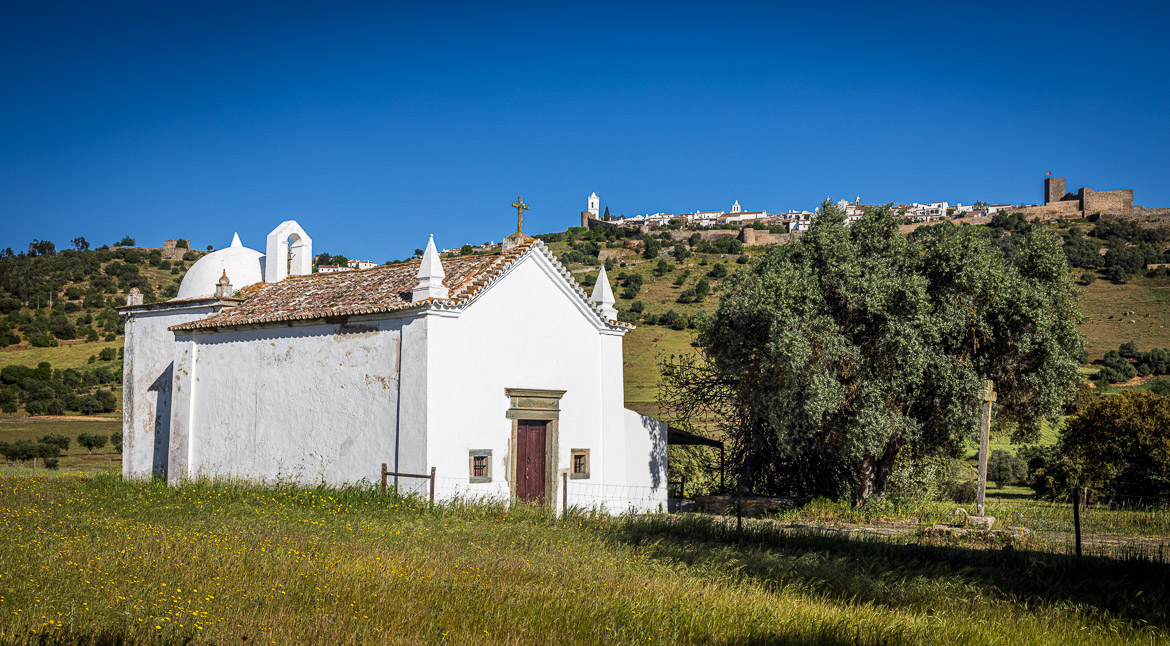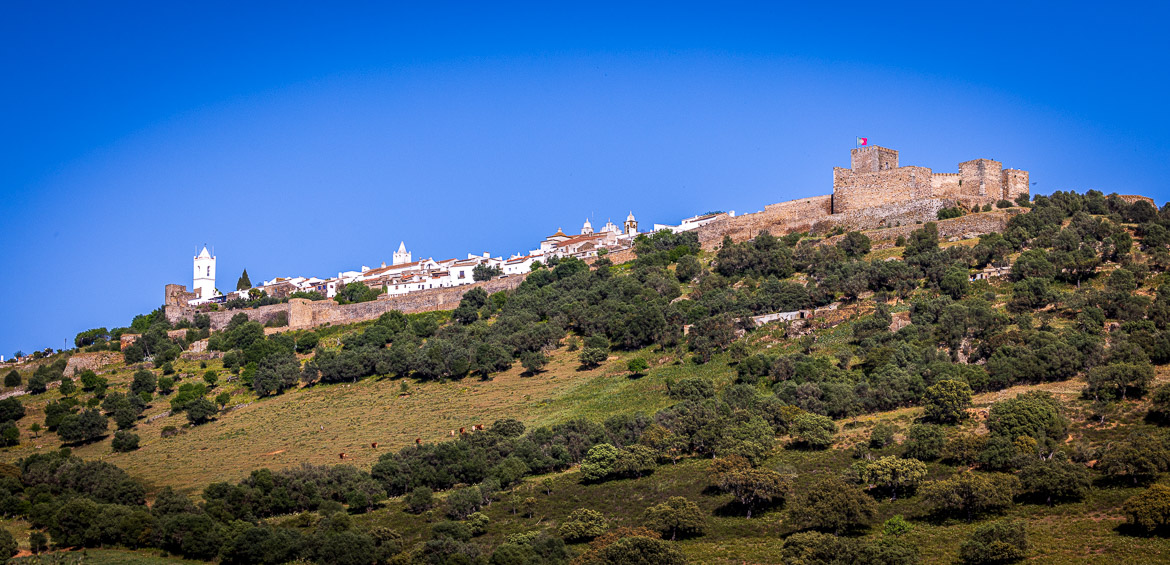
Monsaraz is a beautiful village of around 800 inhabitants. It is dramatically positioned on a hilltop overlooking the Alqueva lake (one of the largest artificial lakes in Europe) and the border towards Spain.
Due to its geographical position the hilltop has always occupied an important place in the history. It has been occupied by different peoples since prehistoric times. The surrounding area has many prehistoric monuments from neolithic times, and in a future post I will show a few of those.
The hill itself was a pre-historic fortification and also had funerary temples, carved from the local rock. The Romans occupied it and later, from the 8th century, the Moors inhabited the town and castle. In 1167 the castle and medina was taken by the Christian forces only to be retaken again by the Moors. In 1232 King Sancho, supported by the Knights Templars, retook the citadel and town. He placed it under the control of the Templars with the responsibility to establish a garrison there to protect the border towards Spain.
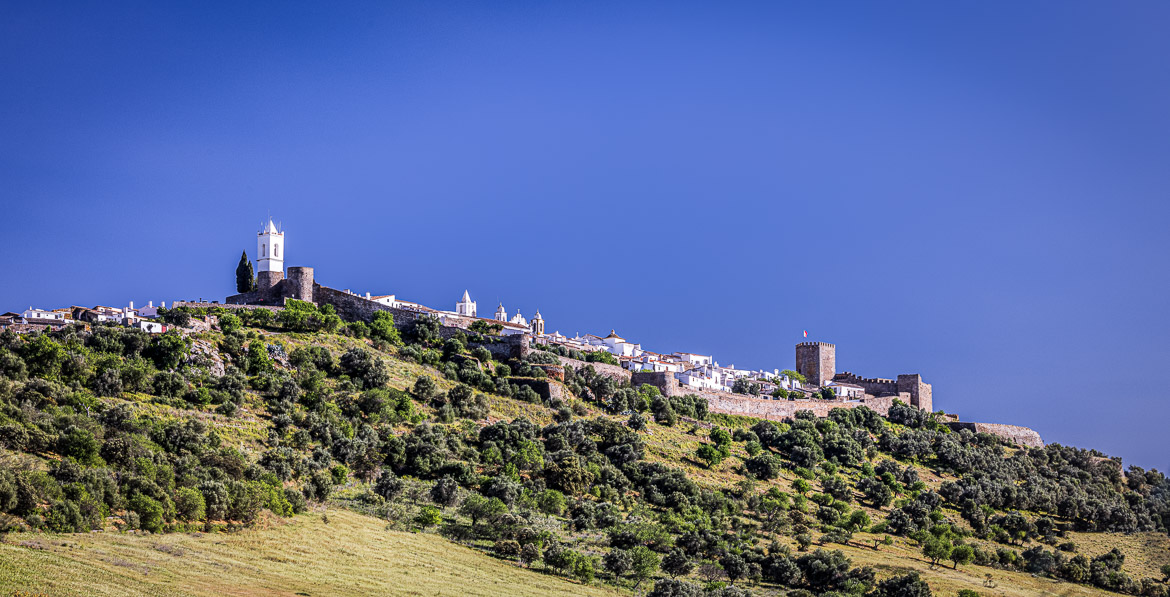
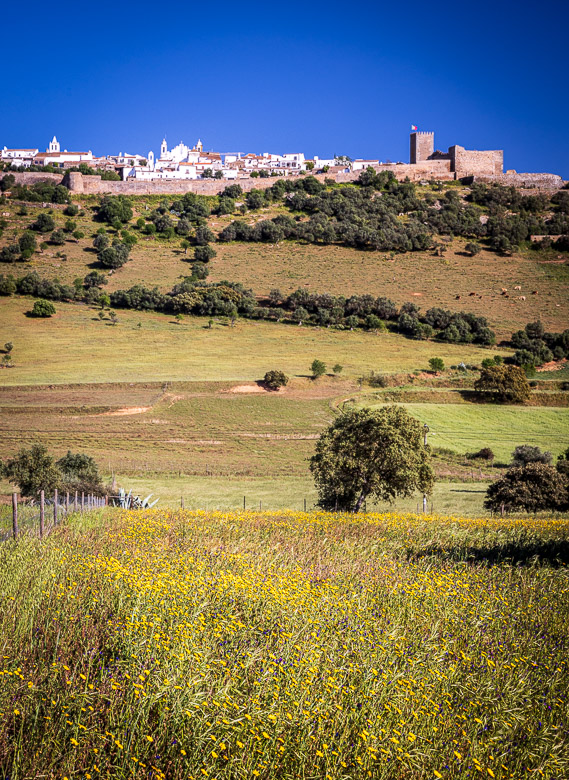
Now any military function is long lost and what remains is a sleepy village surrounded by a defence wall and with a beautiful castle. Inside the white-washed houses surround a couple of cobble-stoned streets, where a car can move around only with great difficulty. The views are glorious from the town and its walls.
I have so many photos that I want to share that I decided to split it into two posts. The first one here shows the town seen from afar and some views of the streets of Monsaraz.
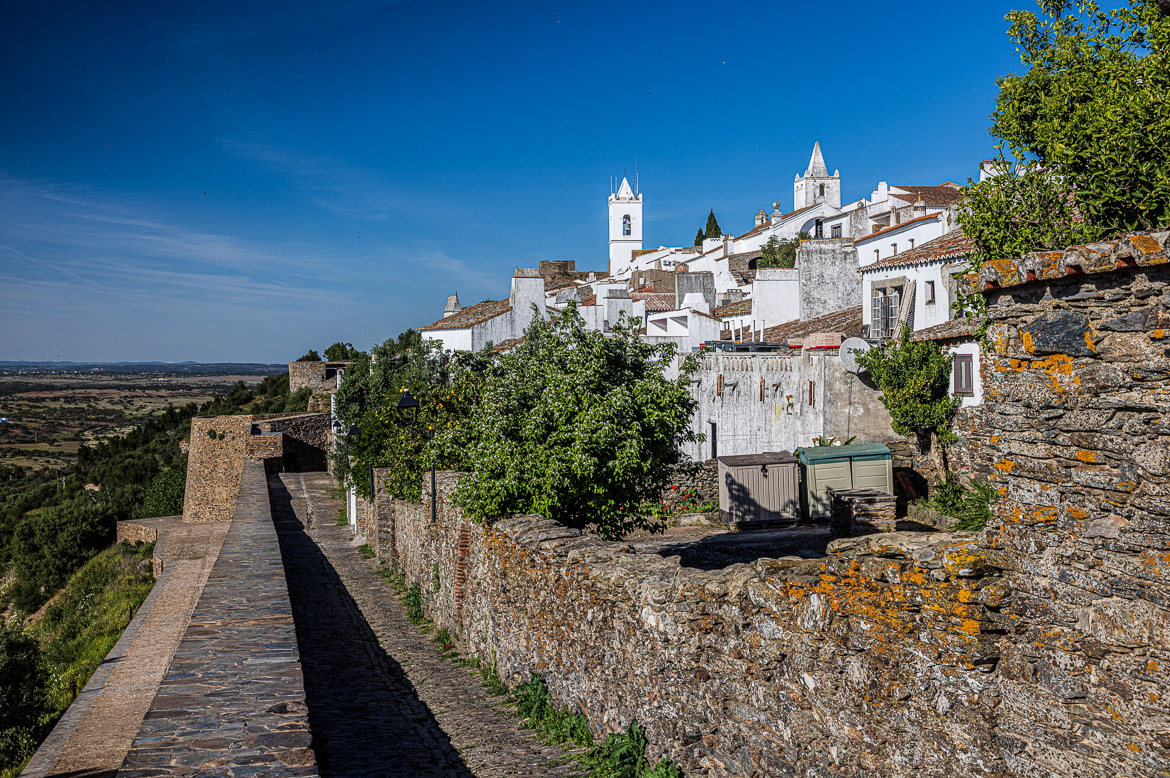
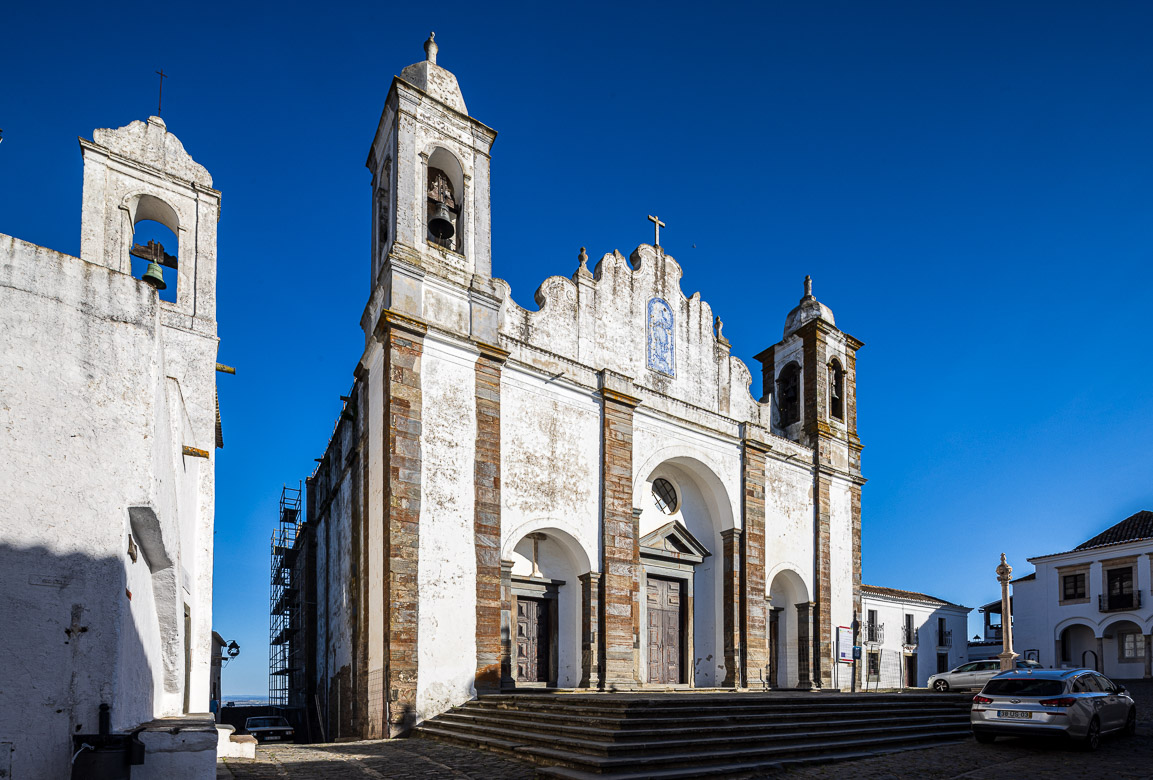
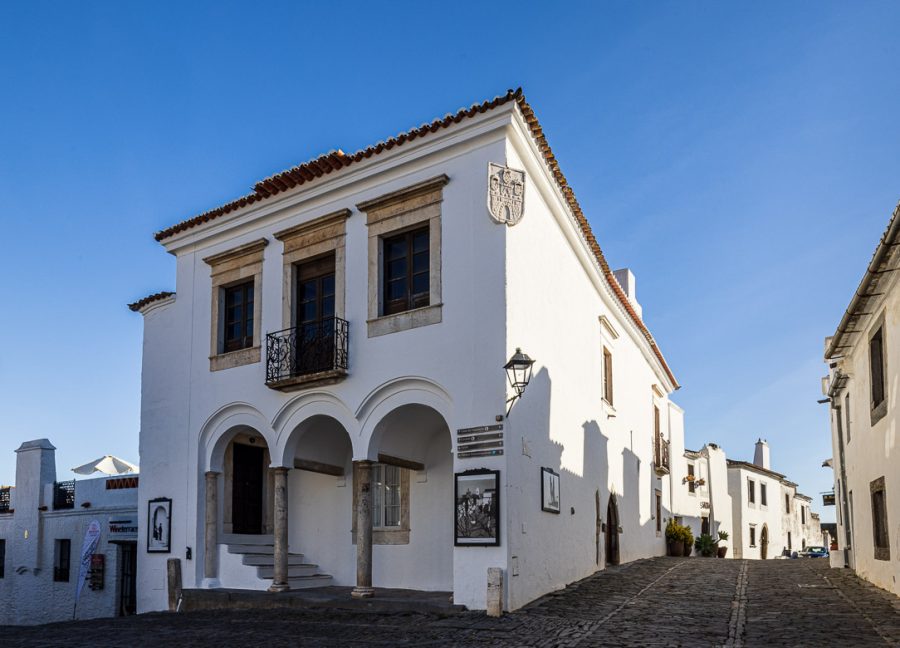
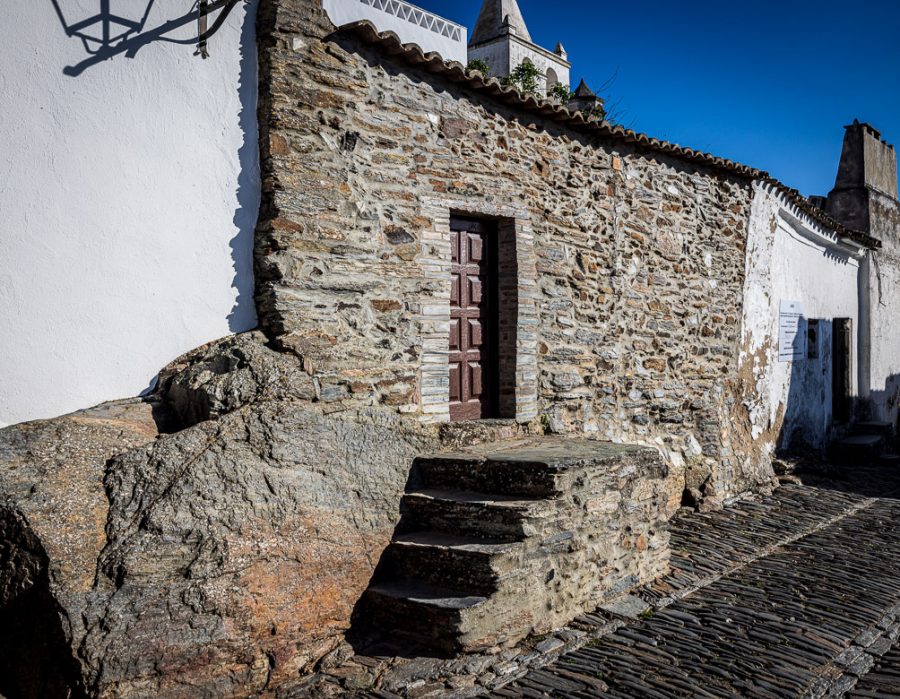
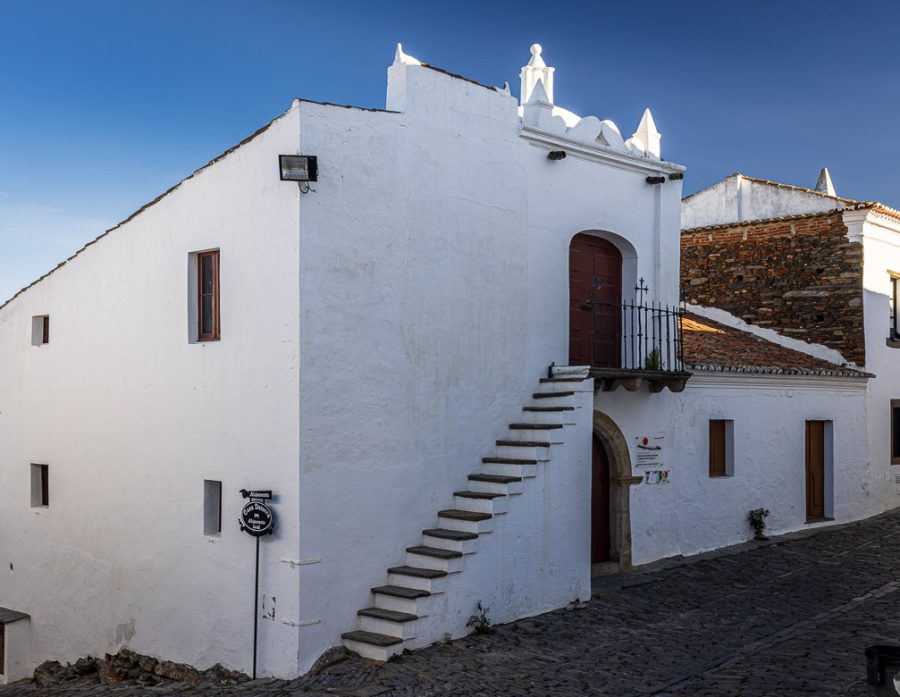
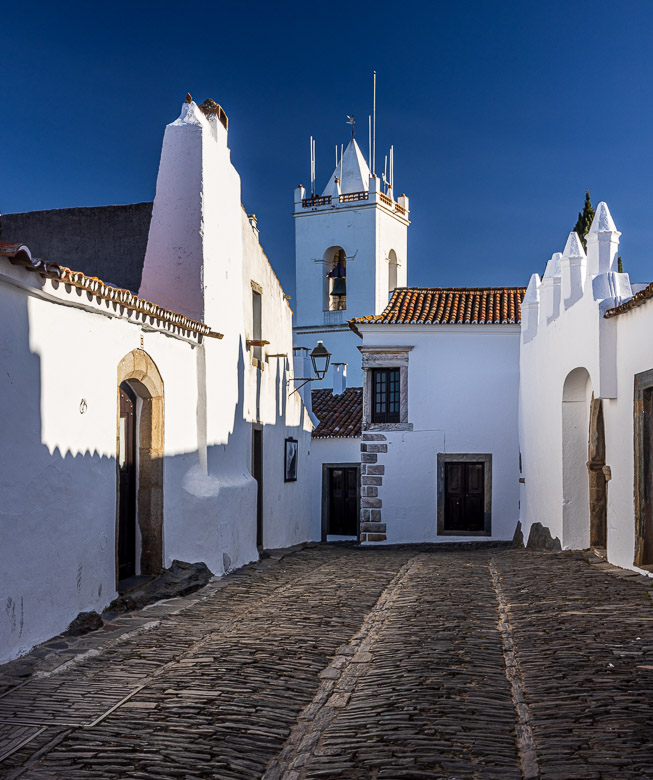
As the evening approached, Jennifer and I bought some wine from a local merchant and tasted a glass on his roof terrace overlooking the Alqueva Lake and chatting to an American lady who had found her way to this remote outpost in the borderland between Spain and Portugal. The right image below here was taken from the terrace with the terracotta rooftops in its warm evening colours and the lake just seen in the background.
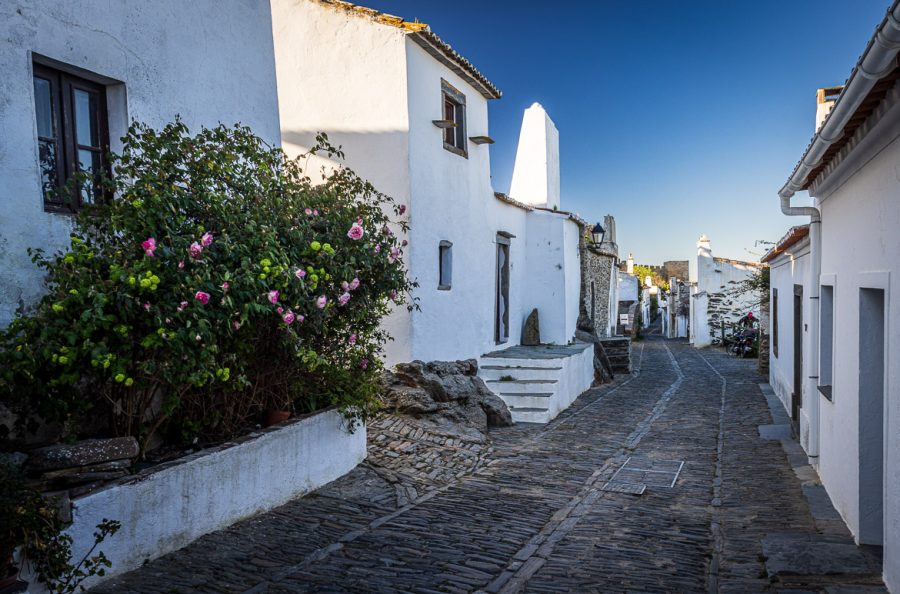
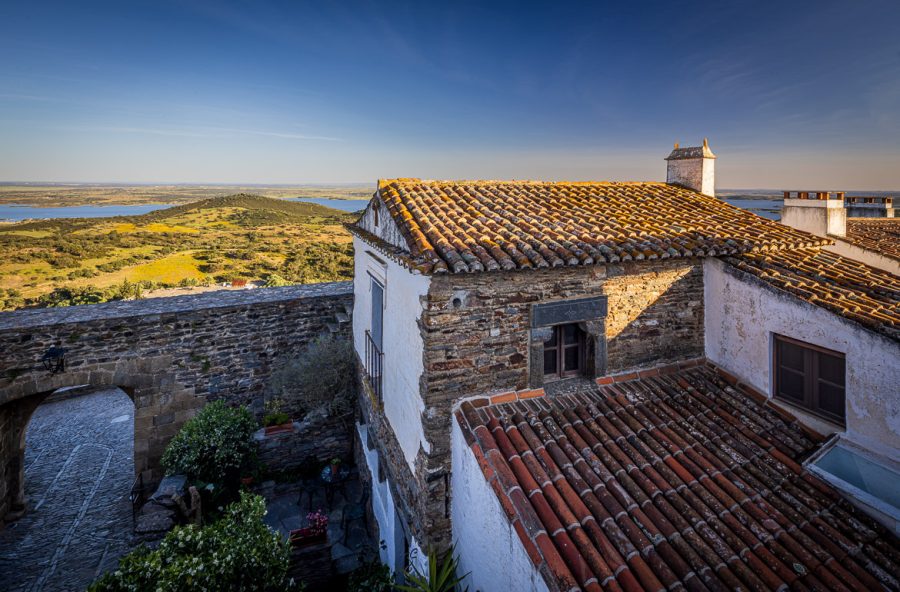
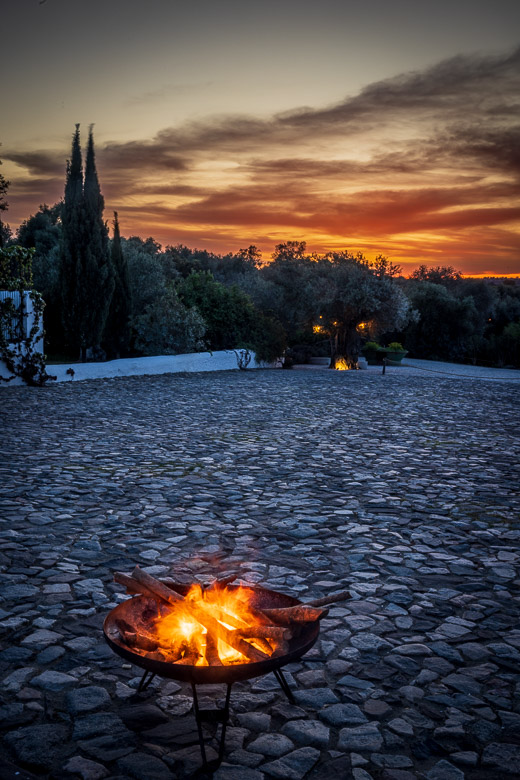
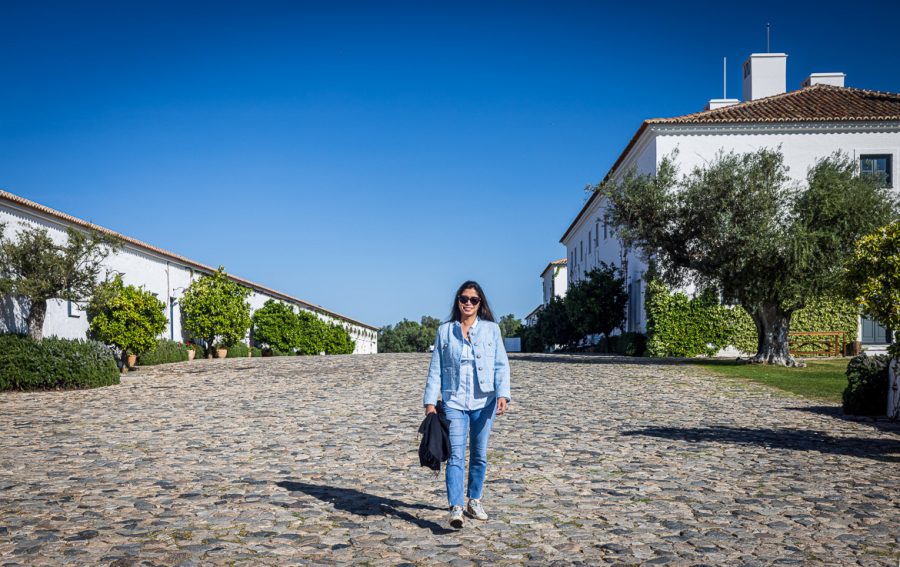
Jennifer and I stayed just below Monsaraz at a most wonderful 0ld Quinta, converted to a lovely resort, Sao Lourenco do Barrocal, while we explored Monsaraz and the environment including several neolithic monuments. At the top you see Jen walking among the buildings of the resort and in the evening we watched the sun setting while we had a drink at the fire.
